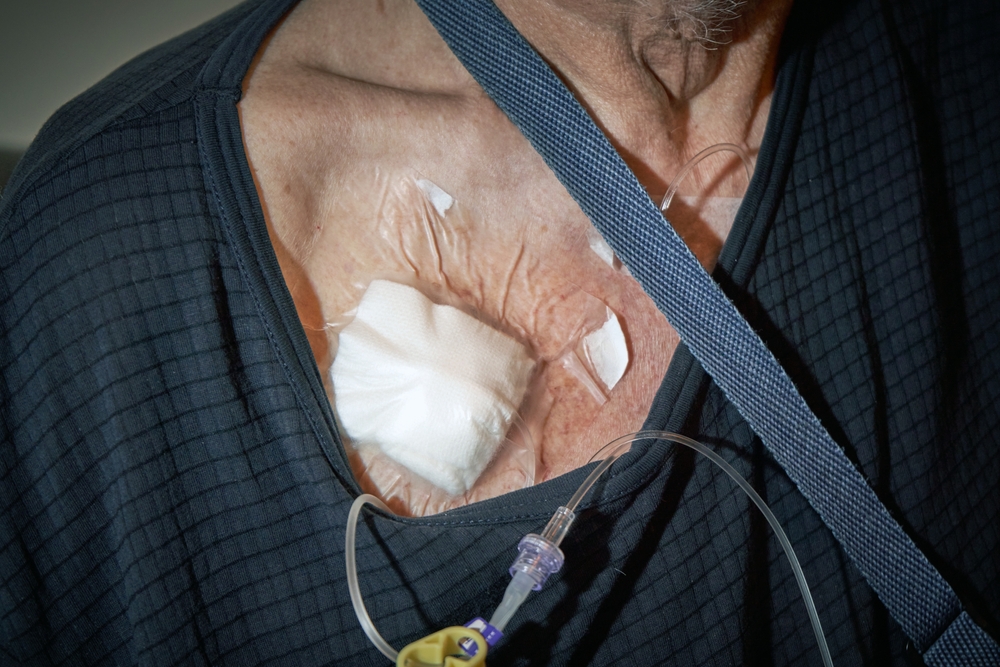Implanted port-a-cath devices, also known as port catheters, are commonly used in the medical field for a variety of purposes such as intravenous therapy, blood transfusions, and the administration of medications. These devices provide a central access point for medical treatments, reducing the need for repeated needle sticks and minimizing the risk of vein damage. However, in recent years, there has been a growing concern about the safety of these devices, with numerous lawsuits being filed against manufacturers like C.R. Bard and AngioDynamics.
What are Port-a-Cath Devices?
Port-a-cath devices consist of two main components: a port and a catheter. The port is a small medical device designed to be implanted beneath the skin, usually in the chest area. It serves as a reservoir for the injection of medications or the withdrawal of blood samples. The catheter, a thin tube made of soft plastic, connects the port to a vein, allowing for the easy and direct administration of treatments.
These devices are designed to be long-term solutions for patients requiring frequent or prolonged intravenous treatments. They are more convenient and can reduce the discomfort associated with traditional needle sticks. However, the risks associated with port-a-cath devices have raised concerns among patients and healthcare providers.
Potential Risks and Complications
In recent years, numerous lawsuits have been filed by patients who have experienced serious complications and injuries due to defective port-a-cath devices. These lawsuits allege that manufacturers like Bard, Cook Medical, and AngioDynamics failed to adequately warn patients and healthcare providers about the potential risks and were negligent in the design, manufacturing, or marketing of these devices. Some of the risks and complications associated with implanted port catheters include:
Catheter Failure and Fracture
One of the primary concerns associated with port-a-cath devices is the potential for catheter failure and fracture. The composition of the catheter, particularly the use of materials like polyurethane and barium sulfate, has been linked to degradation and weakening over time. This can lead to fracturing of the catheter, which may result in serious injuries such as organ damage, blood clots, and migration of catheter fragments.
Infection and Sepsis
Another significant risk associated with port-a-cath devices is the potential for infection. When the port is implanted, there is a risk of bacteria entering the body, leading to localized infections or bloodstream infections. In severe cases, these infections can progress to sepsis, a life-threatening condition that can cause organ failure and death.
Catheter Migration
Catheter migration is a serious complication that can occur when the catheter becomes dislodged from its intended location. This can result in the catheter moving through the bloodstream, potentially causing damage to blood vessels, organs, and other vital systems. Catheter migration may require surgical intervention to remove or reposition the device.
Thromboembolism
Thromboembolism, the formation of blood clots, is another risk associated with port-a-cath devices. Blood clots can form around the device or within the catheter, obstructing the flow of medications and posing a risk of migration to other parts of the body. Thromboembolism can have serious consequences, including pulmonary embolism, stroke, or arterial blockages.
Legal Actions and Lawsuits
In response to the injuries and complications allegedly associated with implanted port-a-cath devices, patients have filed lawsuits against manufacturers such as Bard, Cook Medical, and AngioDynamics. These lawsuits allege that the manufacturers knew or should have known about the potential risk of port-a-cath side effects and failed to adequately warn patients and healthcare providers. Patients claim that they have suffered significant physical and emotional harm as a result of the defective devices.
As of January 2024, there were ongoing multidistrict litigation (MDL) claims involving Bard PowerPort devices, with nearly 70 product liability lawsuits pending before Judge David G. Campbell in Arizona. The lawsuits are in the early stages, and more claims are expected to be filed as individuals who have experienced complications from implanted port-a-cath devices seek compensation for their injuries.
Seeking Compensation and Legal Representation
Implanted port-a-cath devices have offered convenience and improved medical treatments for many patients. However, the risks and complications associated with these devices have led to numerous product liability lawsuits against manufacturers like C.R. Bard. Patients who have experienced serious port-a-cath injuries or complications are now taking legal action, holding manufacturers accountable, and potentially preventing future harm to patients.
Port-a-Cath Lawsuit Information
Complications of central venous port systems: a pictorial review, Insights Imaging
Outcomes following port-a-catheter placement in the Medicare population, Surgery Open Science




